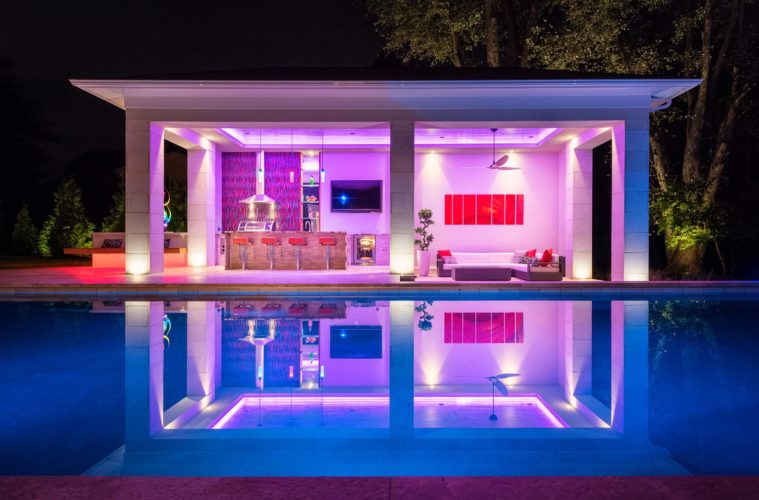With the boundary between indoor and outdoor luxury living becoming increasingly blurred—and not just in California and Florida—homeowners are pushing the envelope. They want their fresh-air environments to snap, crackle and pop, just like their spare-no-expense homes.
From the viewpoint of a chaise lounge in a gazebo overlooking an infinity pool, say, a well-orchestrated illuminated landscape plays up all the bells and whistles—pools, spas, fountains, waterfalls and grottos, to name a few. Light, when added strategically and with a designer’s eye, accentuates what’s beautiful and ensures that anything less is cast in shadow.
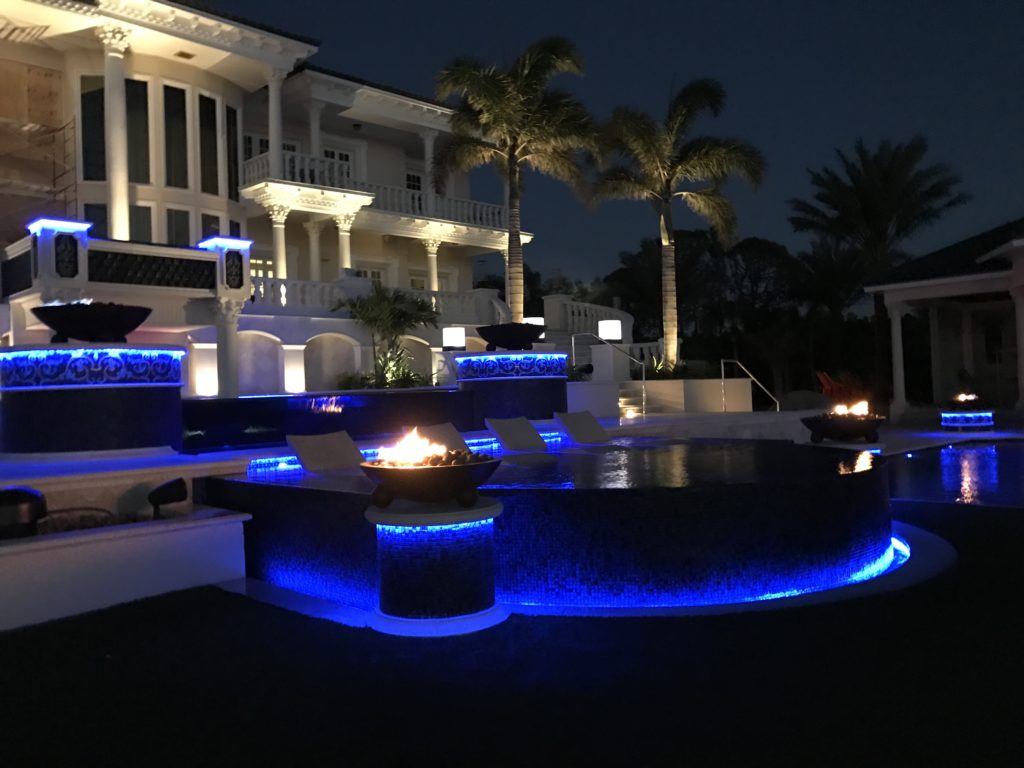

The recent history of landscape illumination technology, as in other areas of the lighting industry, can be divided into two categories: before and after LED. The migration of outdoor lighting from older technologies, like halogen, incandescent and fluorescent, to LED has brought numerous benefits including longer bulb life, better energy efficiency and low maintenance. In tandem with a system of timers and sensors, and with unlimited color selection and brightness controls, the capabilities of today’s LED lighting technology are more advanced than ever.
LED lamps vary greatly—beam spread, lumen output, and wattage differences are just a few of the variations that exist between the many lamps that are available today. A lighting designer’s task is to employ each lamp in a different way depending on a number of variables, including fixture, what is being lit, and what kind of effect s/he and the homeowner are after. With the sophistication of automated control systems, the pièce de résistance of outdoor lighting design is the ability to control the system from a smartphone no matter where you are.
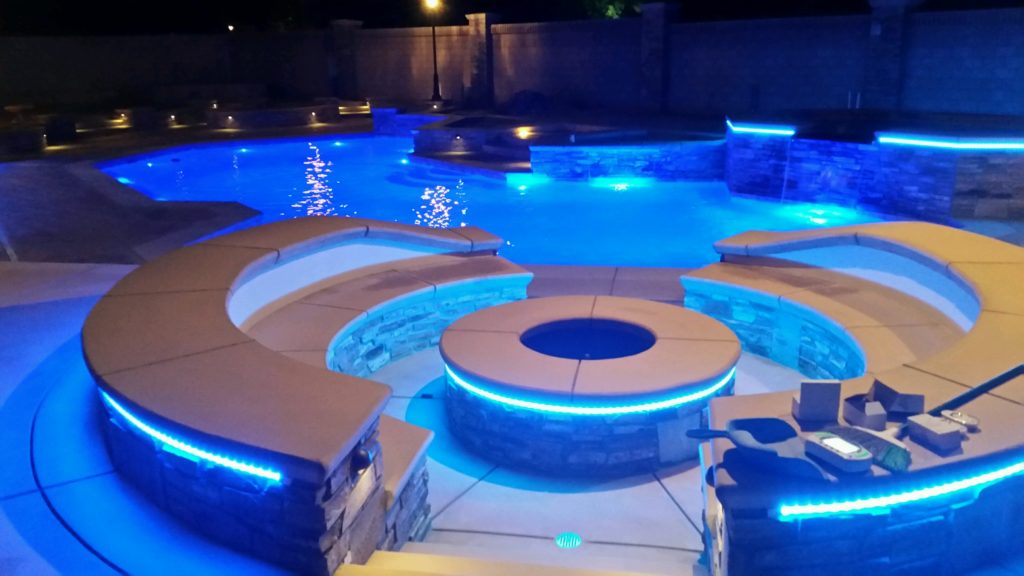

The exterior lighting experts we spoke with agree that primary considerations when designing an outdoor environment, on your own or with the help of a professional designer, are lighting type, safety and security, and aesthetics.
Auroralight
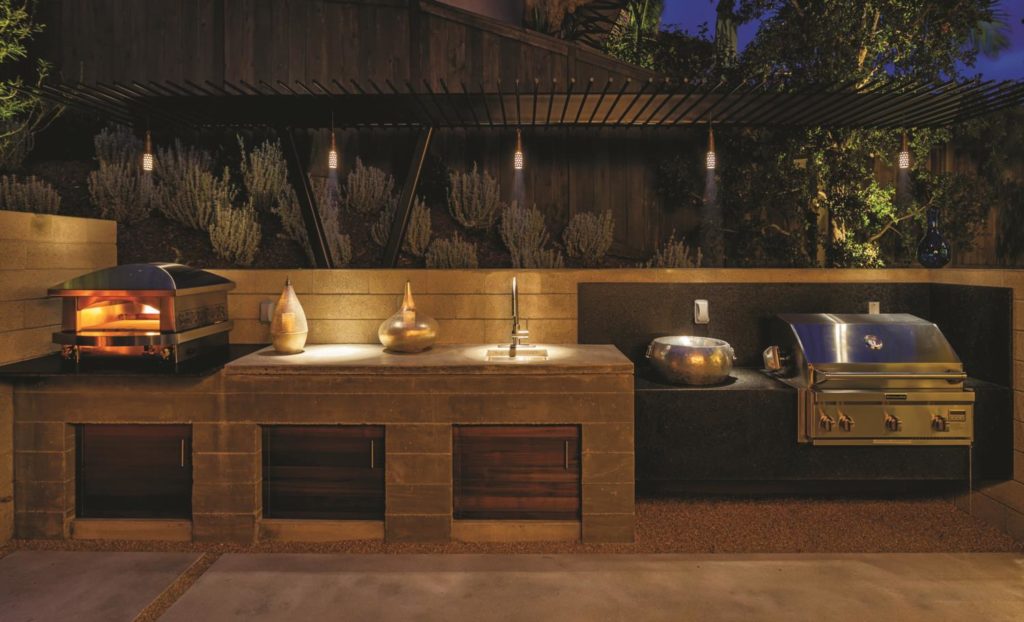

Directional lighting, downlighting, in-grade lighting, bollards, path and area lighting, pendants, underwater lighting, wall and step lighting, mounts: This California-based company has become an industry leader since company president and lead designer Michael Joye, a former landscape contractor himself, started Auroralight in 1996 when he noticed exterior lighting fixtures being adversely affected by otherwise normal climate conditions. His solution was to use high quality material such as solid brass and copper—now the industry standard—instead of plastic and aluminum, to combat the effects of salt, sea, and time.
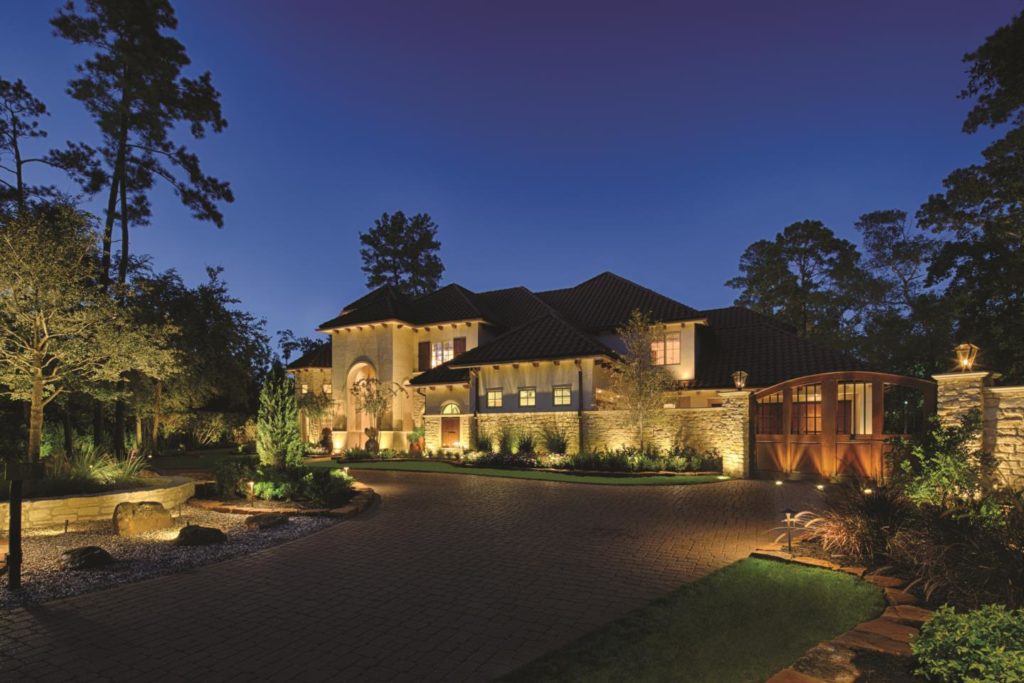

“We take pride in providing lifetime solutions to our customers’ needs; whether it’s a standard product, a mounting solution, or a custom fixture design,” explains Jason Kessel, Auroralight’s marketing communications manager, who adds that their unique AMS mount design allows lights to “tilt, pivot, spin and rotate without twisting wires for the perfect angle to light your space.”
Auroralight’s most recent luminaire designs are meant to be minimal and discrete, like the Scepter, whose ultra-compact size makes it easy to install inconspicuously into planters and is ideal for illuminating pathways and intimate garden areas. Hidden or not, it’s important to the company that all its products achieve the best performance and are made from the highest quality materials and adhere to design standards that are modern yet timeless.
According to Kessel, a new product launching soon is Auroralight’s catenary cable mounting system, with which lights can be hung in an attractive pattern of staggered lengths, perfect for outdoor plazas and intimate dining patios. A brass junction box hides the wiring and makes for easy serviceability. “Catenary lighting is on trend, so Auroralight is providing a more compact, yet robust solution for those projects.” says Kessel.
PAL Lighting USA
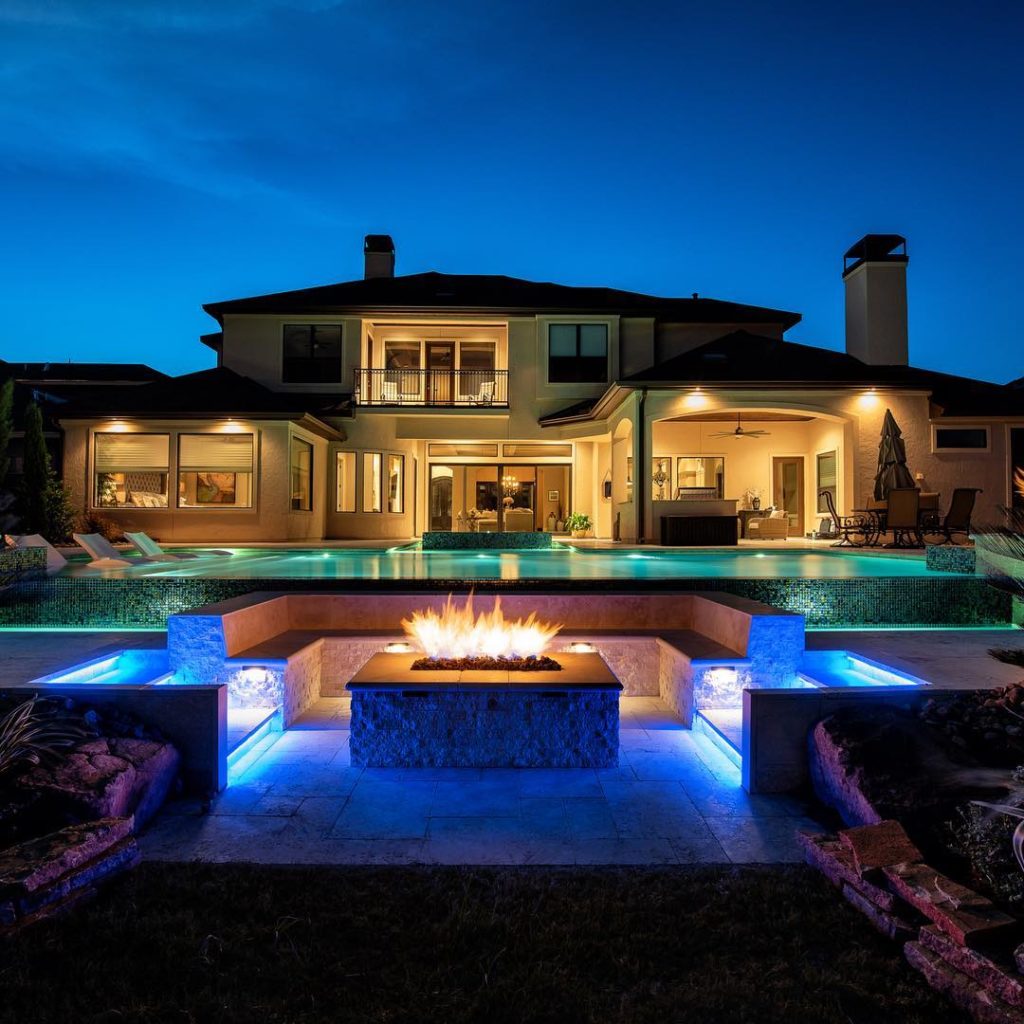

From spas to spillovers, fountains to fire bowls, the sky may not even be the limit to fantastical effects in today’s world of luxury pool design. “With negative edge pools, why not light up the trough?” asks Ray Thibault. “Raised columns might support a fire bowl, so why not light up the edges of the columns?” Thibault, director of business development for PAL Lighting USA (the North American agent for the Australian company Bellson Electric) has seen a lot of change during his 15 years with the company.
In the 1990s, Sydney-based Bellson started by outfitting fiberglass pools in the Australian market with a low-voltage, self-enclosed pool light using a Xenon bulb. With the advent of low-voltage LED pool illumination in 2008, which PAL was the first to introduce, lighting systems got safer. With 12-volt and smaller LEDs, however, more lights had to be used to get the desired effects, instead of using one huge light in the pool end.
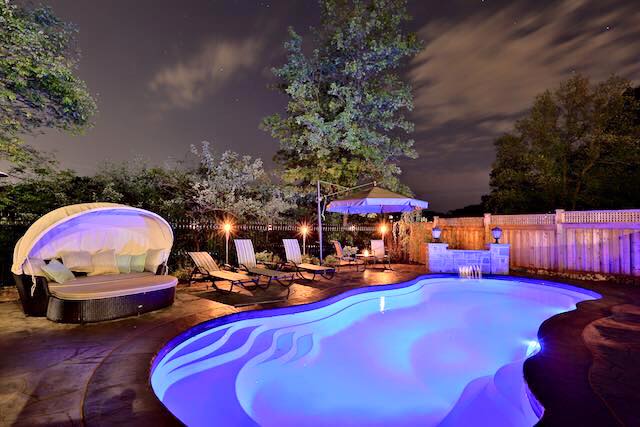

Benefits include more complete illumination of the pool with mini lights on entry steps, swimouts and tanning ledges. Perimeter lighting creates a whole new look for the pool and makes stepping pads look like they’re floating on water. Waterfall or rain curtain illumination is now easy and homeowners can even have integrated landscape and backyard feature lighting.
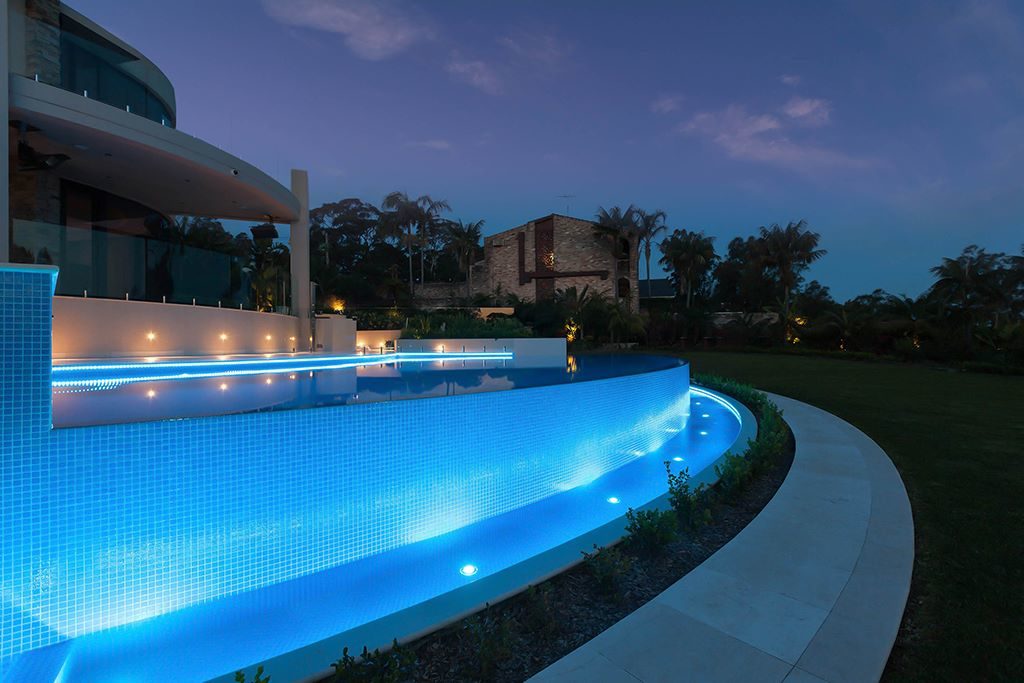

Once the safety issue was addressed, manufacturers and designers focused on improving upon the wow factor. After all, says Thibault, “The real beauty is looking at the effects of the lights.”
PAL introduced safe color change to the pool environment, and with electronic power supplies the user just has to put their thumb on the color wheel to control the color and brightness of pool lighting, water features, and landscape lighting all from the one, fully wireless system.
Crenshaw Lighting
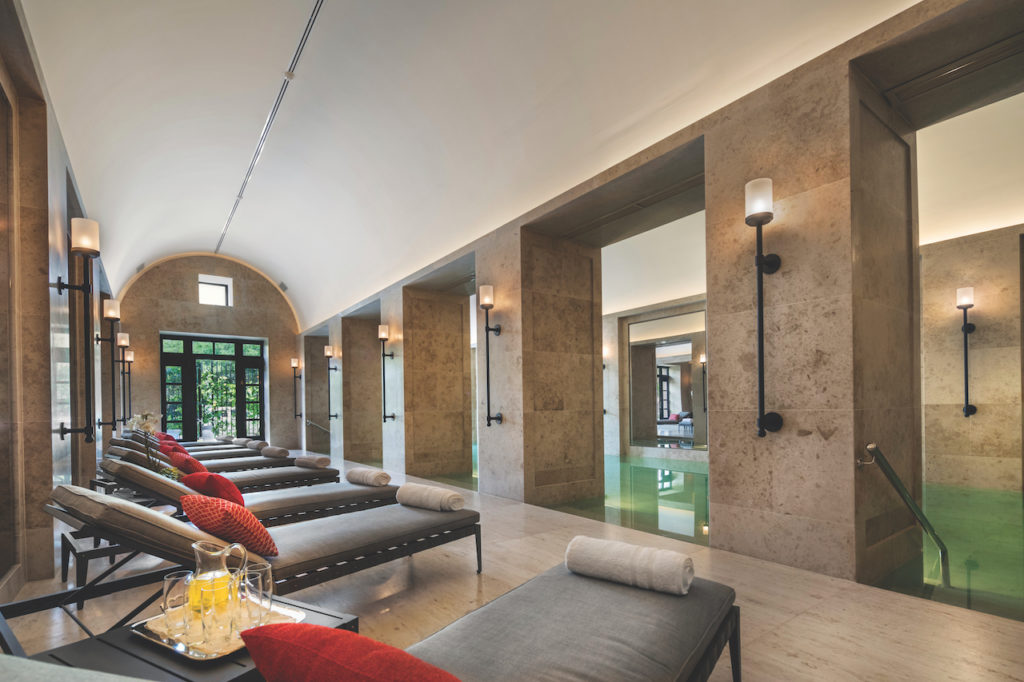

Recently working with Robert A.M. Stern Architects, Crenshaw provided beautifully detailed custom lighting fixtures for a luxury apartment complex in Peru, a 22-story, 31-unit limestone tower featuring large loggias and terraces overlooking the Lima Golf Club, with single-family townhouses that define a private garden. Among the many showstopping examples of Crenshaw’s contributions are a pair of intricate 10-foot exterior niche sconces with cast aluminum leaves (each back-lit) flanking the main entry. Clean-lined contemporary sconces illuminate the pool. Not all of the company’s projects are as substantial and high-profile as this one, but the majority of customers, whether corporate, government or private, require the utmost level of product, performance and painstaking craftsmanship.
“We don’t want to hide the ‘jewelry’ of the space,” says Patrick Gable, marketing coordinator at Crenshaw, a custom decorative lighting company well known for impeccable historical restoration and replication. Not only do the fabricators, engineers and designers at Crenshaw create beautiful, thoughtful designs, they also achieve high performance. “Our goal is to not interrupt historic aesthetics, but to incorporate new technology in lamping,” says Gable. “What people are after is energy efficiency while also keeping the historical integrity and intricacy intact.”
Crenshaw is one of the few companies worldwide that retrofits solid-state LED light into antique and historical fixtures. So sought after are the company’s restoration skills that they recently doubled the size of their headquarters. “We’ve invested to preserve the heritage of lamp-making in the U.S. by growing our staff and shop so that our skilled team can continue to manufacture our fixtures in our Floyd, Virginia, facility,” says Gable. “With the exception of pouring our own metal, we can do everything in-house.”
Aqua Dock Lights
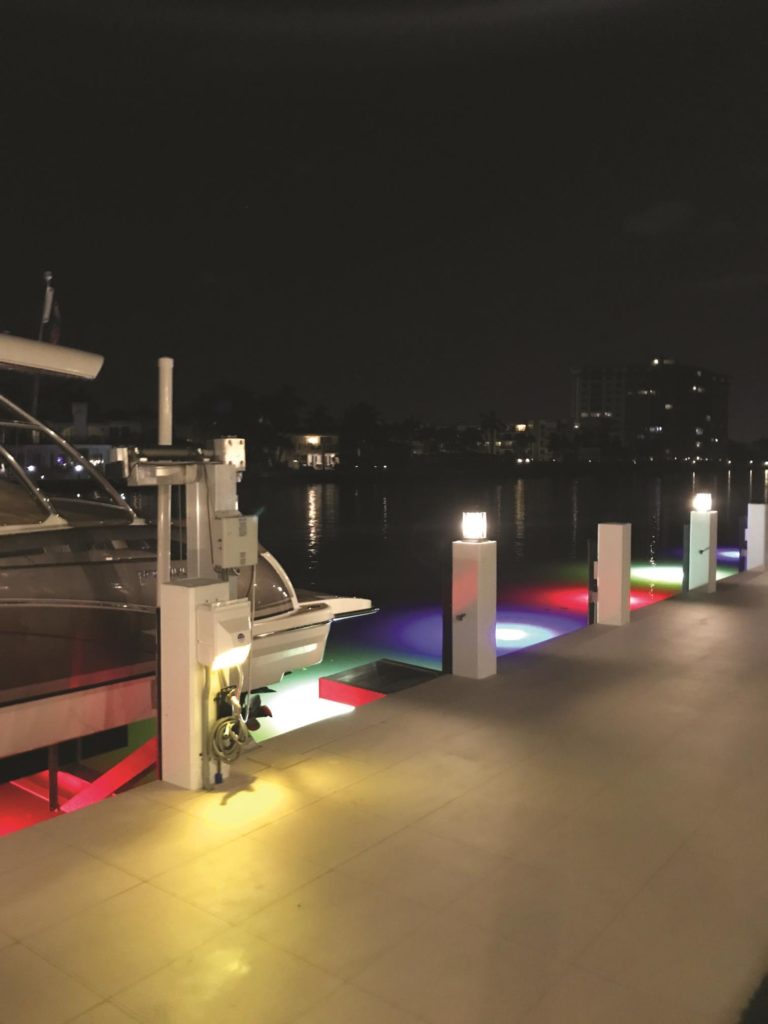

Growing up in Marietta, Ohio, Coby Williams’s family always owned a boat and he spent a lot of time navigating small lakes and the Ohio River. When he graduated from college with a degree in marketing and started fishing around for a new business concept, he zeroed in on, you guessed it, fish. Well, not exactly. Williams observed that a lot of halogyn and high-voltage lights illuminating fishing and boating docks were not safe to swim near nor very bright. “I reached out to electrically inclined friends,” says Williams, owner of the company, and together they developed a pioneering LED underwater dock lighting system that is the brightest and most energy-efficient in the world.
Because Aqua Dock Lights cast up to 60-feet in diameter of light, homeowners have a greater sense of safety and security, especially when young children are around. In the case of an accident, well-lit water makes it easier and faster to find someone who may have slipped off the dock. The high-level illumination also helps boats navigate better around docks.
Many homeowners are drawn to Aqua Dock Lights simply for the beauty they lend to waterfronts at night. What’s more, they attract fish, which is appreciated equally by those who want to catch them and those who simply want to admire the underwater flora and fauna. Red, orange and white lighting options are available as well as green and blue, the best colors for attracting fish.
The popularity of Aqua Dock Lights is spreading beyond South Florida. “People may think it’s a tropical innovation,” says Williams, “but we have customers in Alaska who use the lights for ice fishing.”


